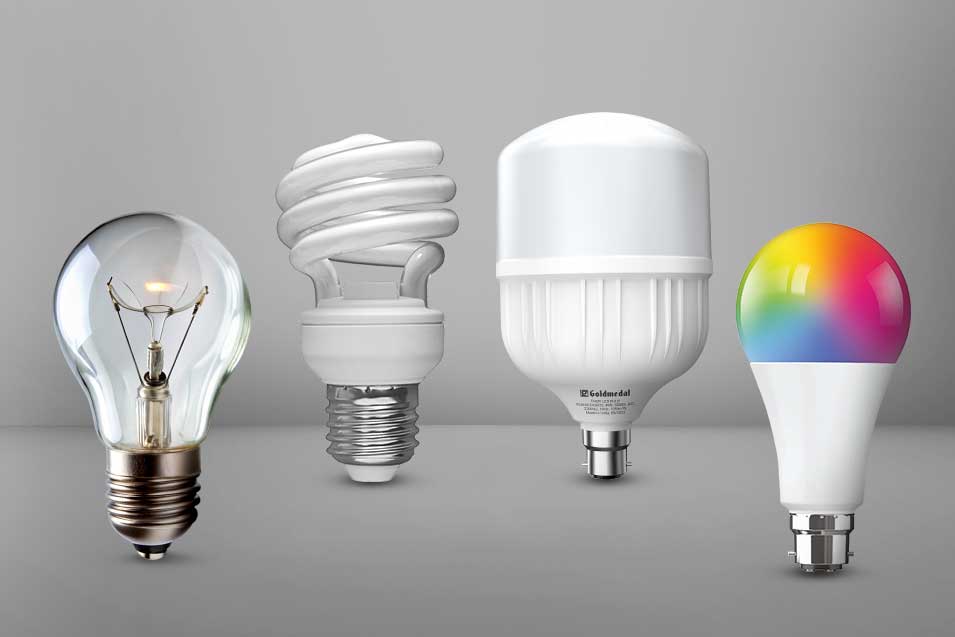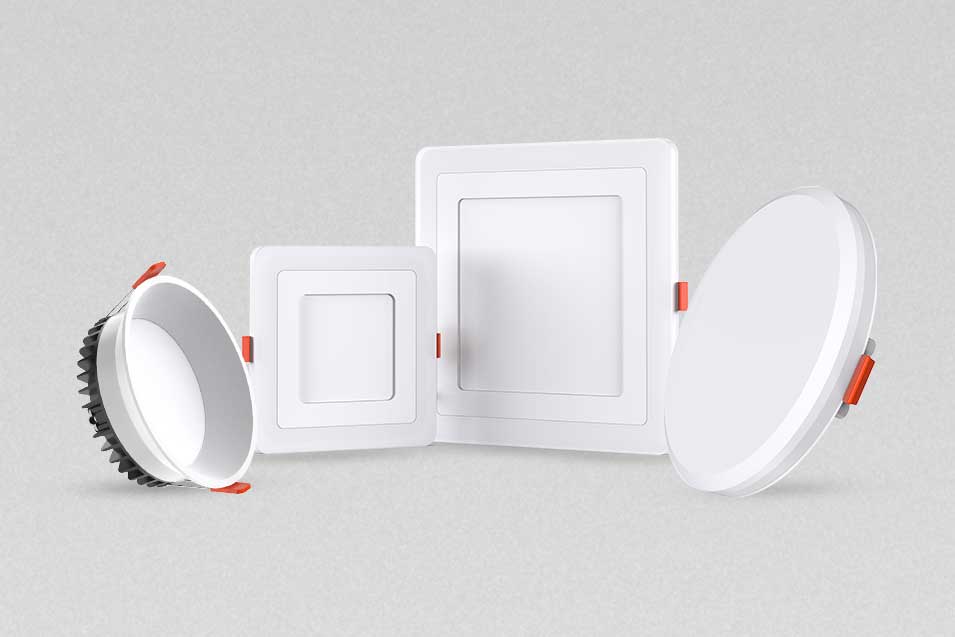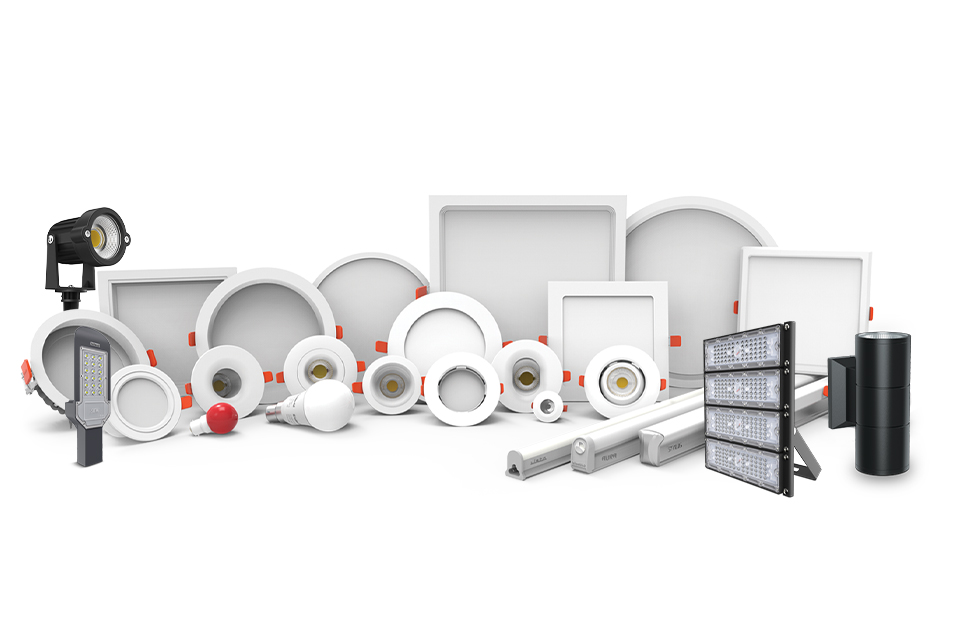
Different Types of Light Bulbs Explained for Indian Homes
18th August 2025 | Written By: Vinod Pottayil | Read Time: 3min | Last Updated: 18th August 2025
Do you remember the yellow light bulbs and white tube lights that were staple illumination sources in our homes while growing up? Then, the LED bulbs became the standard in most homes. There is a plethora of options you can explore today to ramp up the indoor glamour of your home. Here is your quick guide to different types of light bulbs.
-
Incandescent Bulbs
There are the traditional bulbs with an in-built thin filament that provide warm, yellow light. Since they cost cheap, they are still commonly used for general lighting in bathrooms or hallways. It is also installed as a light source to aesthetic pieces such as chandeliers.
However, incandescent bulbs produce significantly more heat compared to LED bulbs . They also consume more electricity, making them low energy-efficient option. Moreover, their availability is fading away from the market. -
Light Emitting Diodes (LED) Bulbs
LED lights have become a preferred lighting solution these days. They are available in an assorted range of designs which can liven up every nook and corner of your home. More importantly, they generate low heat and reduce your electricity bills. They have an average lifespan of 15-25 years and contain no mercury due to which makes they are also a sustainable, eco-friendly option.
While LEDs are costlier than incandescent bulbs, their merits balance the expenditure in a few years. -
Compact Fluorescent Lamps (CFLs)
CFLs are a spiral-shaped or tube-shaped glass enclosure. They are filled with a mix of mercury vapour and argon gas. When vapour-gas mix registers an electrical current, ultraviolet light (UV) is generated. UV light stimulates the fluorescent coating inside the lamp to discharge visible light.
According to the Energy Efficiency & Renewable Energy Centre, CFLs are a cost-effective and efficient light source for spaces that need lights turned on for a prolonged period. While CFLs are slightly costlier than incandescent bulbs, they use less energy and last much longer. As a result, they can lead to significant energy savings over time. They are also ideal for hard-to-reach areas such as lofts because they don’t need frequent replacement.
It is advisable to avoid putting CFLs in areas which require on-off usage at frequent intervals. -
Halogen Bulbs
If you are looking to replicate natural daylight in your home, then go for halogen bulbs. They are also known as an upgraded version of incandescent bulbs, as they have a tungsten filament. They are filled with halogen gas, which raises the temperature of the filament to emit a bright white or cool white light. They are a perfect pick for spotlighting, task lighting, kitchen counters, under-cabinet spaces and reading lamps.
A major drawback of halogen lamps is that they become very hot as they burn at high temperatures. They also consume more energy as compared to LED lights. -
Smart Bulbs
Smart bulbs have brought a wave of innovation in home lighting solutions. The in-built Wi-Fi or Bluetooth capability coupled with LED technology helps you to control them through an app or voice assistants such as Alexa and Google. You can remotely switch the bulbs on and off or regulate their brightness and hues.
You can even sync smart bulbs with your home automation system. They can be fitted in living rooms, dining area, master bedrooms or spaces where you require mood lighting.
Smart bulbs are expensive than other bulb variants. You also need an internet connection and other appropriate technology integration to make them work.
Conclusion
Lighting is a core element of home styling and functionality. You can either choose only one type for the entire home or use a combination of different types. The best fit depends on multiple elements such as aesthetic beauty, utility, practicality, energy efficiency, safety, longevity, colour temperature and amount of money you to spend.

Frequently Asked Questions (FAQs) :
- Q1. Are incandescent bulbs good for homes? Incandescent bulbs are good if you are looking for pocket-friendly lights or secondary sources of illumination. But, they tend to heat faster and increase electricity expenses.
- Q2. Do CFLs make a good replacement for incandescent bulbs? There is no doubt that CFLs are superior to incandescent bulbs in terms of energy efficiency and longevity. However, CFLs should be used for spaces which need illumination for longer periods at a stretch. Their output is likely to be affected by frequent on-off use.
- Q3. Which is the best bulb for homes? The decision depends on your personal preferences and various other factors. However, LED bulbs are usually popular due to their multi-functionality, different shapes and sizes, energy efficiency, longer lifespan and eco-friendliness.
- Q4. Which light should be used to showcase artefacts? Halogen light bulbs provide both visually appealing and functional lighting for artefacts such as paintings, sculptures, photo frames, etc. They are good for focus lighting in kitchens or a study library.
- Q5. Are smart bulbs worth their cost? Smart bulbs offer several convenient features which you can easily operate remotely through an app on your phone or via voice assistants. They come in different colours and are compatible with several home automation devices. So, if you are looking for a tech-savvy home, then smart bulbs are worth their cost.




